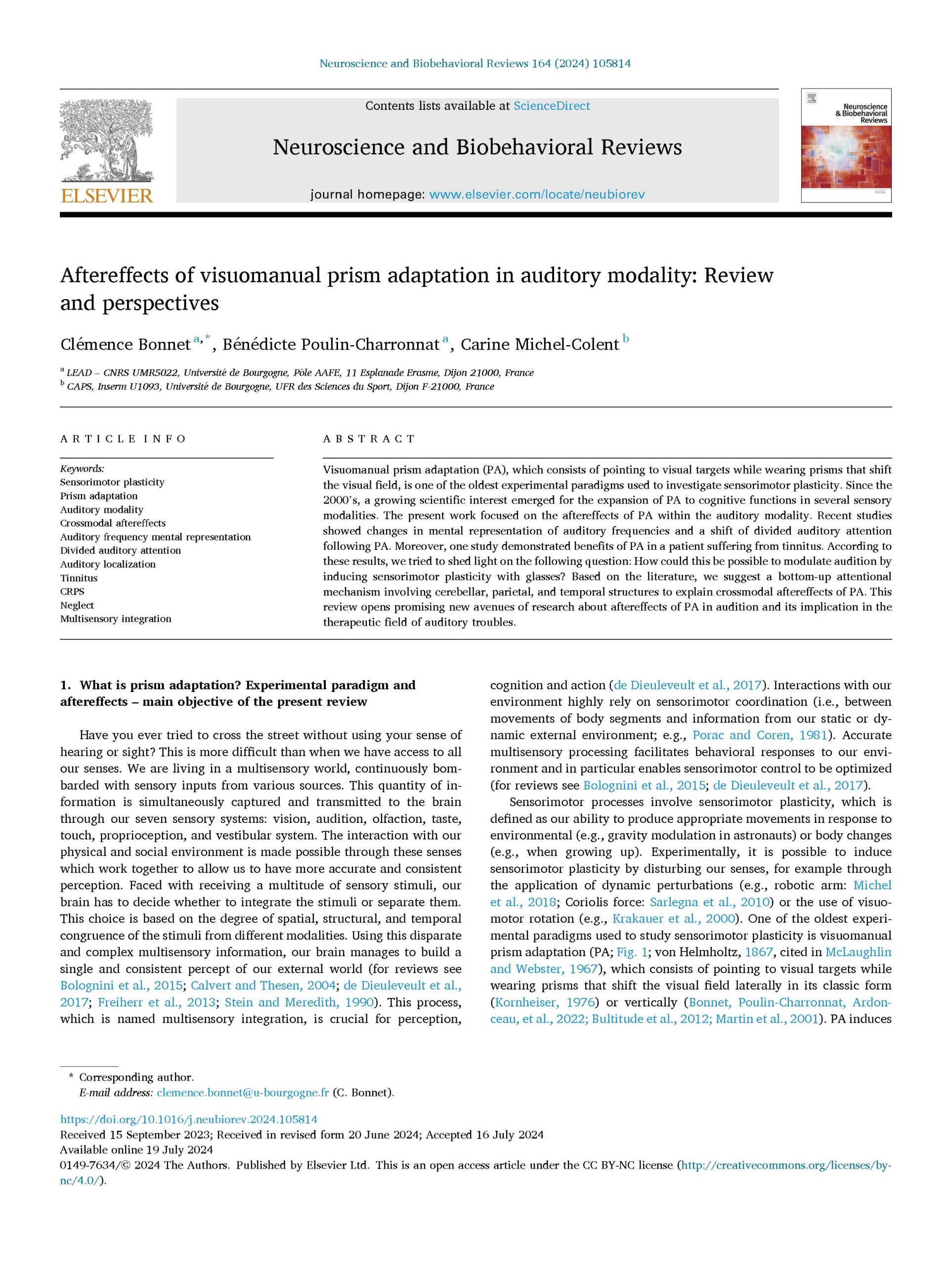Visuomanual prism adaptation (PA), which consists of pointing to visual targets while wearing prisms that shift the visual field, is one of the oldest experimental paradigms used to investigate sensorimotor plasticity. Since the 2000’s, a growing scientific interest emerged for the expansion of PA to cognitive functions in several sensory modalities. The present work focused on the aftereffects of PA within the auditory modality. Recent studies showed changes in mental representation of auditory frequencies and a shift of divided auditory attention following PA. Moreover, one study demonstrated benefits of PA in a patient suffering from tinnitus. According to these results, we tried to shed light on the following question: How could this be possible to modulate audition by inducing sensorimotor plasticity with glasses? Based on the literature, we suggest a bottom-up attentional mechanism involving cerebellar, parietal, and temporal structures to explain crossmodal aftereffects of PA. This review opens promising new avenues of research about aftereffects of PA in audition and its implication in the therapeutic field of auditory troubles.
Aftereffects of visuomanual prism adaptation in auditory modality: Review and perspectives
